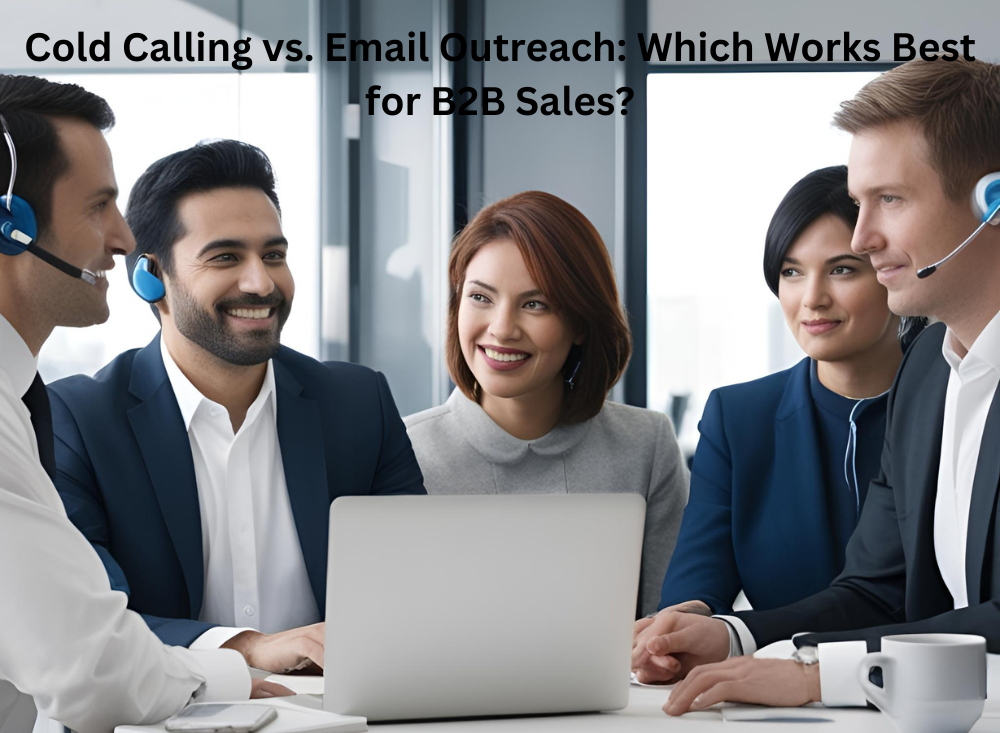
In the competitive landscape of B2B sales, reaching potential clients effectively is crucial for business success. Two primary outreach methods often debated among sales professionals are cold calling and email outreach. While both have their merits, understanding their effectiveness can help businesses optimize their sales strategies.
Cold Calling: A Personal Touch
Cold calling is the traditional method of directly reaching out to potential clients via phone calls. It allows sales representatives to engage in real-time conversations, build rapport, and handle objections immediately.
Advantages of Cold Calling
- Instant Interaction: Sales reps can directly address prospects’ concerns and tailor the conversation in real time.
- Personal Connection: A human touch can foster trust and build relationships faster than text-based communication.
- Immediate Feedback: Unlike emails, where responses may take days, calls provide instant clarity on interest levels.
Challenges of Cold Calling
- Time-Consuming: Manually dialing numbers and having long conversations can slow down the outreach process.
- Gatekeepers & Voicemails: Many decision-makers have assistants or voicemail setups that make reaching them difficult.
- Low Success Rate: Many prospects are hesitant to engage with unsolicited calls, resulting in frequent rejections.
Email Outreach: Scalable and Strategic
Email outreach is a more modern approach where businesses send targeted emails to potential clients. This method is particularly effective for nurturing leads and maintaining a steady flow of communication.
Advantages of Email Outreach
- Scalability: Sales teams can send hundreds of emails at once, making it more efficient for large-scale outreach.
- Documentation: Emails provide a written record of communication, making it easier to track conversations and follow up.
- Less Intrusive: Unlike phone calls, emails allow recipients to respond at their convenience, reducing pressure and resistance.
Challenges of Email Outreach
- Low Open & Response Rates: Many emails get ignored, deleted, or caught in spam filters, reducing engagement.
- Lack of Immediate Feedback: Unlike calls, emails may take days to receive a response, slowing down the sales cycle.
- Generic Messaging Risks: Poorly personalized emails can come across as spam, reducing effectiveness.
Which is More Effective?
The effectiveness of cold calling vs. email outreach largely depends on the target audience, industry, and sales objectives. Here’s how businesses can determine the best approach:
- Cold Calling Works Best When:
- Selling high-ticket or complex B2B products/services that require detailed discussions.
- Engaging with decision-makers who prefer direct conversations.
- Building relationships in industries where personal interactions matter (e.g., consulting, enterprise sales).
- Email Outreach Works Best When:
- Scaling outreach efforts to a large number of potential clients.
- Nurturing leads through automated follow-ups.
- Providing value-driven content before initiating a sales conversation.
A Hybrid Approach: The Best of Both Worlds
Rather than choosing one over the other, many successful B2B sales teams use a hybrid approach. A well-crafted email can warm up a prospect before a follow-up call, increasing engagement and receptiveness. Similarly, a phone call can be followed by an email summarizing the discussion and providing additional resources.
Conclusion
Both cold calling and email outreach have their strengths and limitations in B2B sales. The key is to leverage each method strategically based on business goals, industry norms, and target audience preferences. By combining both approaches effectively, sales teams can maximize their outreach success and drive higher conversions.